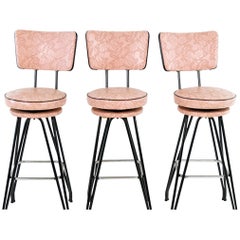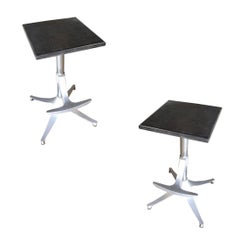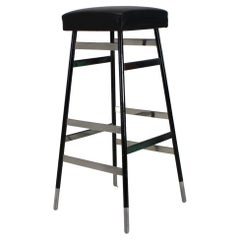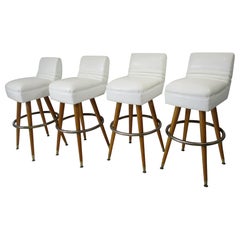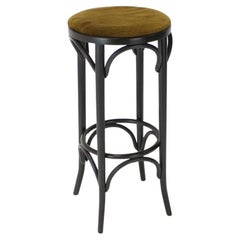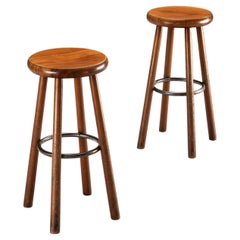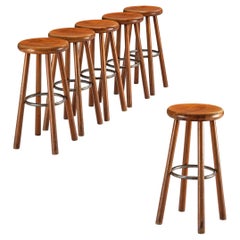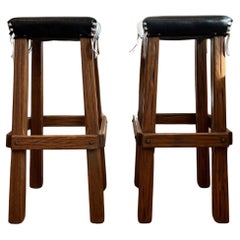Mid Century Bar Stools
Mid-20th Century Mid-Century Modern Stools
Iron
Vintage 1950s American Mid-Century Modern Stools
Aluminum
Vintage 1970s Danish Mid-Century Modern Stools
Upholstery, Wood
Vintage 1970s Czech Mid-Century Modern Stools
Metal
Mid-20th Century American Mid-Century Modern Stools
Upholstery, Wood
Vintage 1980s Czech Mid-Century Modern Stools
Fabric, Wood
Vintage 1960s European Mid-Century Modern Stools
Metal
Vintage 1960s European Mid-Century Modern Stools
Metal
Mid-20th Century American Mid-Century Modern Stools
Leather, Oak
Vintage 1940s French Mid-Century Modern Stools
Leather, Walnut
Mid-20th Century Polish Mid-Century Modern Stools
Velvet
Vintage 1950s American Mid-Century Modern Stools
Chrome
Vintage 1960s Italian Mid-Century Modern Stools
Wood, Wicker
Mid-20th Century Belgian Stools
Wood
Vintage 1960s Colombian Mid-Century Modern Stools
Leather, Wood
Vintage 1960s American Mid-Century Modern Stools
Wrought Iron
Mid-20th Century Mid-Century Modern Stools
Metal
20th Century Campaign Stools
Rush, Wood
Vintage 1950s American Mid-Century Modern Stools
Iron
Vintage 1960s French Mid-Century Modern Stools
Brass, Iron
Mid-20th Century American Mid-Century Modern Stools
Animal Skin
Mid-20th Century European Mid-Century Modern Stools
Rush, Oak
Vintage 1970s Italian Mid-Century Modern Stools
Chrome
Mid-20th Century Italian Mid-Century Modern Stools
Wicker, Rattan
Vintage 1960s Mid-Century Modern Stools
Chrome
Vintage 1950s French Mid-Century Modern Stools
Chrome, Metal
21st Century and Contemporary Portuguese Club Chairs
Brass
Antique Mid-19th Century American Adirondack Stools
Rattan, Wood
Mid-20th Century American Mid-Century Modern Stools
Brass
Mid-20th Century Danish Mid-Century Modern Stools
Iron
Vintage 1970s American Mid-Century Modern Stools
Upholstery
Vintage 1960s American Mid-Century Modern Stools
Metal
Vintage 1950s Italian Mid-Century Modern Stools
Brass
Mid-20th Century French Stools
Leather
Vintage 1950s Italian Mid-Century Modern Stools
Brass
Mid-20th Century Swedish Stools
Wood, Teak
Vintage 1970s Mid-Century Modern Stools
Chrome
Mid-20th Century North American Hollywood Regency Stools
Bamboo
2010s Mexican Mid-Century Modern Stools
Leather, Cedar
Vintage 1960s Italian Mid-Century Modern Stools
Rattan
Vintage 1970s American Mid-Century Modern Stools
Chrome
Mid-20th Century American Mid-Century Modern Stools
Wrought Iron
Vintage 1960s American Mid-Century Modern Stools
Iron
Vintage 1960s American Mid-Century Modern Stools
Steel, Chrome
Mid-20th Century Polish Mid-Century Modern Stools
Steel
Mid-20th Century American Mid-Century Modern Stools
Metal
Vintage 1970s Mid-Century Modern Stools
Faux Leather, Teak
Mid-20th Century American Mid-Century Modern Stools
Upholstery
Vintage 1950s American Mid-Century Modern Stools
Steel, Chrome
2010s American Mid-Century Modern Stools
Fabric
Vintage 1950s American Mid-Century Modern Stools
Iron
20th Century North American Mid-Century Modern Stools
Chrome
2010s Danish Stools
Beech
Vintage 1970s American Mid-Century Modern Stools
Rope, Wood
Vintage 1950s French Mid-Century Modern Stools
Wrought Iron
Vintage 1960s Spanish Brutalist Stools
Oak
Vintage 1960s Spanish Brutalist Stools
Metal
Mid-20th Century American Mid-Century Modern Stools
Upholstery
- 1
- ...
Mid Century Bar Stools For Sale on 1stDibs
How Much are Mid Century Bar Stools?
A Close Look at Mid-century Modern Furniture
Organically shaped, clean-lined and elegantly simple are three terms that well describe vintage mid-century modern furniture. The style, which emerged primarily in the years following World War II, is characterized by pieces that were conceived and made in an energetic, optimistic spirit by creators who believed that good design was an essential part of good living.
ORIGINS OF MID-CENTURY MODERN FURNITURE DESIGN
- Emerged during the mid-20th century
- Informed by European modernism, Bauhaus, International style, Scandinavian modernism and Frank Lloyd Wright’s architecture
- A heyday of innovation in postwar America
- Experimentation with new ideas, new materials and new forms flourished in Scandinavia, Italy, the former Czechoslovakia and elsewhere in Europe
CHARACTERISTICS OF MID-CENTURY MODERN FURNITURE DESIGN
- Simplicity, organic forms, clean lines
- A blend of neutral and bold Pop art colors
- Use of natural and man-made materials — alluring woods such as teak, rosewood and oak; steel, fiberglass and molded plywood
- Light-filled spaces with colorful upholstery
- Glass walls and an emphasis on the outdoors
- Promotion of functionality
MID-CENTURY MODERN FURNITURE DESIGNERS TO KNOW
- Charles and Ray Eames
- Eero Saarinen
- Milo Baughman
- Florence Knoll
- Harry Bertoia
- Isamu Noguchi
- George Nelson
- Danish modernists Hans Wegner and Arne Jacobsen, whose emphasis on natural materials and craftsmanship influenced American designers and vice versa
ICONIC MID-CENTURY MODERN FURNITURE DESIGNS
- Eames lounge chair
- Nelson daybed
- Florence Knoll sofa
- Egg chair
- Womb chair
- Noguchi coffee table
- Barcelona chair
VINTAGE MID-CENTURY MODERN FURNITURE ON 1STDIBS
The mid-century modern era saw leagues of postwar American architects and designers animated by new ideas and new technology. The lean, functionalist International-style architecture of Le Corbusier and Bauhaus eminences Ludwig Mies van der Rohe and Walter Gropius had been promoted in the United States during the 1930s by Philip Johnson and others. New building techniques, such as “post-and-beam” construction, allowed the International-style schemes to be realized on a small scale in open-plan houses with long walls of glass.
Materials developed for wartime use became available for domestic goods and were incorporated into mid-century modern furniture designs. Charles and Ray Eames and Eero Saarinen, who had experimented extensively with molded plywood, eagerly embraced fiberglass for pieces such as the La Chaise and the Womb chair, respectively.
Architect, writer and designer George Nelson created with his team shades for the Bubble lamp using a new translucent polymer skin and, as design director at Herman Miller, recruited the Eameses, Alexander Girard and others for projects at the legendary Michigan furniture manufacturer.
Harry Bertoia and Isamu Noguchi devised chairs and tables built of wire mesh and wire struts. Materials were repurposed too: The Danish-born designer Jens Risom created a line of chairs using surplus parachute straps for webbed seats and backrests.
The Risom lounge chair was among the first pieces of furniture commissioned and produced by celebrated manufacturer Knoll, a chief influencer in the rise of modern design in the United States, thanks to the work of Florence Knoll, the pioneering architect and designer who made the firm a leader in its field. The seating that Knoll created for office spaces — as well as pieces designed by Florence initially for commercial clients — soon became desirable for the home.
As the demand for casual, uncluttered furnishings grew, more mid-century furniture designers caught the spirit.
Classically oriented creators such as Edward Wormley, house designer for Dunbar Inc., offered such pieces as the sinuous Listen to Me chaise; the British expatriate T.H. Robsjohn-Gibbings switched gears, creating items such as the tiered, biomorphic Mesa table. There were Young Turks such as Paul McCobb, who designed holistic groups of sleek, blond wood furniture, and Milo Baughman, who espoused a West Coast aesthetic in minimalist teak dining tables and lushly upholstered chairs and sofas with angular steel frames.
Generations turn over, and mid-century modern remains arguably the most popular style going. As the collection of vintage mid-century modern chairs, dressers, coffee tables and other furniture for the living room, dining room, bedroom and elsewhere on 1stDibs demonstrates, this period saw one of the most delightful and dramatic flowerings of creativity in design history.
Finding the Right Stools for You
Stools are versatile and a necessary addition to any living room, kitchen area or elsewhere in your home. A sofa or reliable lounge chair might nab all the credit, comfort-wise, but don’t discount the roles that good antique, new and vintage stools can play.
“Stools are jewels and statements in a space, and they can also be investment pieces,” says New York City designer Amy Lau, who adds that these seats provide an excellent choice for setting an interior’s general tone.
Stools, which are among the oldest forms of wooden furnishings, may also serve as decorative pieces, even if we’re talking about a stool that is far less sculptural than the gracefully curving molded plywood shells that make up Sōri Yanagi’s provocative Butterfly stool.
Fawn Galli, a New York interior designer, uses her stools in the same way you would use a throw pillow. “I normally buy several styles and move them around the home where needed,” she says.
Stools are smaller pieces of seating as compared to armchairs or dining chairs and can add depth as well as functionality to a space that you’ve set aside for entertaining. For a splash of color, consider the Stool 60, a pioneering work of bentwood by Finnish architect and furniture maker Alvar Aalto. It’s manufactured by Artek and comes in a variety of colored seats and finishes.
Barstools that date back to the 1970s are now more ubiquitous in kitchens. Vintage barstools have seen renewed interest, be they a meld of chrome and leather or transparent plastic, such as the Lucite and stainless-steel counter stool variety from Indiana-born furniture designer Charles Hollis Jones, who is renowned for his acrylic works. A cluster of barstools — perhaps a set of four brushed-aluminum counter stools by Emeco or Tubby Tube stools by Faye Toogood — can encourage merriment in the kitchen. If you’ve got the room for family and friends to congregate and enjoy cocktails where the cooking is done, consider matching your stools with a tall table.
Whether you need counter stools, drafting stools or another kind, explore an extensive range of antique, new and vintage stools on 1stDibs.
- 1stDibs ExpertFebruary 17, 2023Whether saddle bar stools are comfortable is largely a matter of personal opinion. However, some people find the curved seats featured on these stools supportive because they conform to the body's contours. Find a variety of saddle bar stools on 1stDibs.
Read More
The 21 Most Popular Mid-Century Modern Chairs
You know the designs, now get the stories about how they came to be.
Mies van der Rohe’s Barcelona Chair Shook Modernism and Charmed Hollywood
The enduring appeal of the Barcelona chair is in the details.
Herman Miller Got Its Start in the Office, but Its Legacy Is in the Home
The brand that turned Charles and Ray Eames, Isamu Noguchi and George Nelson into mid-century household names is just as relevant today as it was six decades ago.
May’s Most Popular Interiors on Instagram
Our feed is filled with the world's most beautiful spaces. See the rooms our followers have deemed the best of the best this month.
April’s Most-Liked Interiors on Instagram
Our feed is filled with the world's most beautiful spaces. See the 10 our followers have deemed the best of the best this month.
See How New York City Designers Experiment on Their Own Homes
There are many lessons to be learned from the lofts, apartments and townhouses of architects and decorators in Manhattan and beyond.
Jeff Andrews Captures Old Hollywood Glamour in His Cinematic Spaces
Having created extravagant homes for reality TV’s biggest stars, the designer is stepping into the spotlight with his first book.
New Orleans’ Lee Ledbetter Makes Design Magic by Mixing Past and Present
The Louisiana-born and -bred architect talks to 1stdibs about the art of making timeless places that matter.
